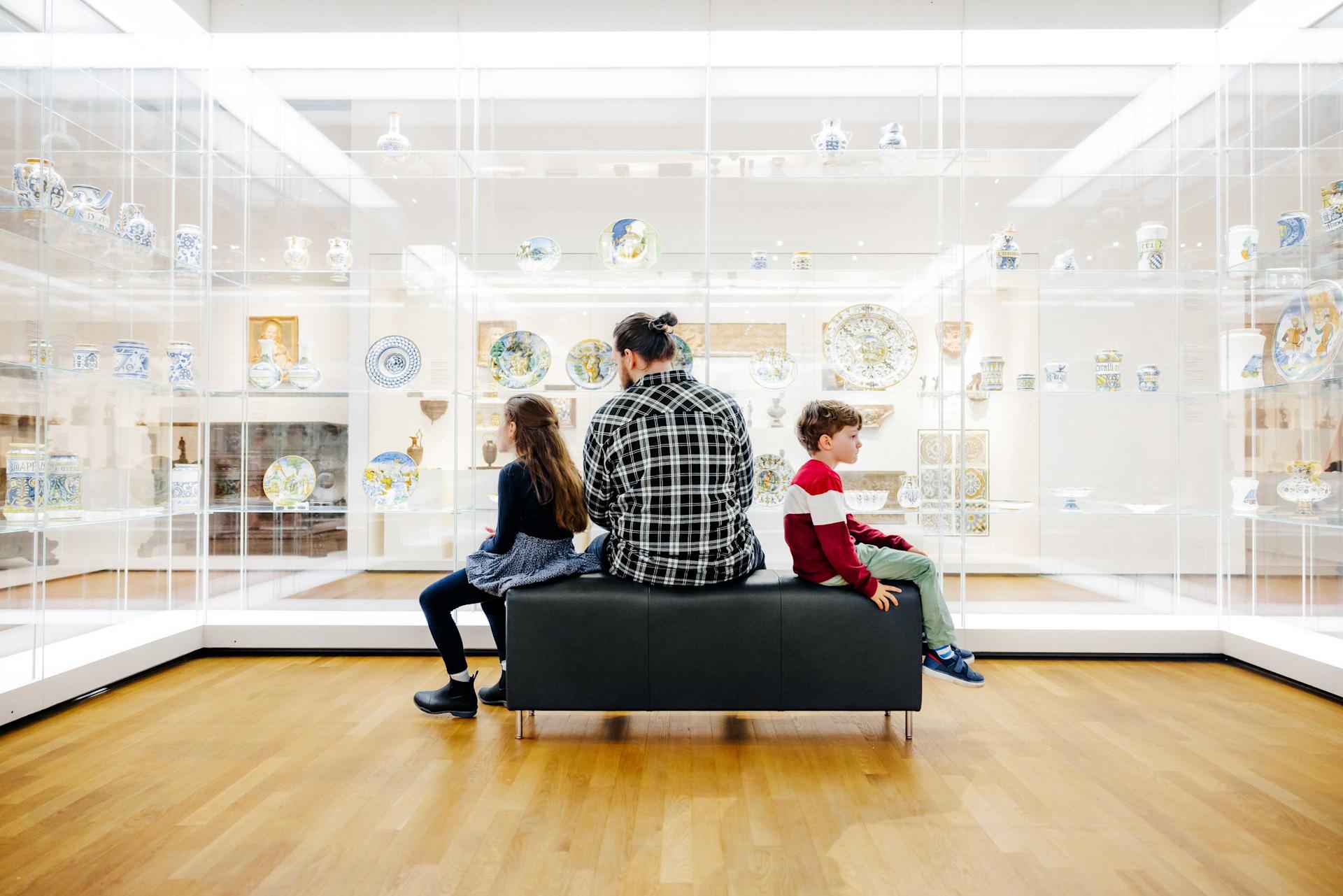
Migros Pioneer Fund
A man shaping the future
Raffael Wüthrich dreams of a positive future for everyone. Now, he wants to know what ideas other people have.
navigation

Migros Museum
7 pointers on access to art and enriching experiences.
You don’t need any special prior knowledge or a doctorate to engage with art. All you need is a curious mind and to dedicate some time. “If you only have a few seconds for a selfie with the Mona Lisa, you’ll never fully appreciate her mysterious smile, and you’ll miss the fact that she’s looking at you from every angle of the room and that Leonardo da Vinci was a genius”, says Cynthia Gavranic, Head of Education at the ‘Migros Museum für Gegenwartskunst’.
Huge works of art that fill an entire room, such as Ragnar Kjartansson’s video installation “The Visitors”, which is projected onto all the walls of a room, are ideal for beginners. Or art using light, such as works by James Turrell or Ólafur Elíasson. Performance art involving people can be a good introduction too. Why? “This art form is an experience. It enables you to experience art by inspiring you to feel something physically. Perhaps you’ll be captivated”, says Gavranic.
Sometimes, when encountering an unfamiliar work of art, I feel like a detective.
The best way is to simply look at it – the more closely, the better. Gavranic reveals: “Sometimes, when encountering an unfamiliar work of art, I feel like a detective.” She ponders over questions: “What does this work remind me of? Does it make me feel anything? Does it feel good or bad?” Step by step, you discover more and more and get to the bottom of the artwork’s message.
“It’s perfectly OK to be perplexed by art. Although I’m an art historian, I often still feel like a beginner myself”, remarks Gavranic. Contemporary art has always had a hard time. Even impressionists like Monet were derided as dilettantes in their time. Gavranic has some simple advice: read the brief information in the museum or use google. Finding out about an artist’s background helps you to understand their works better.
You can view art online. “But you only feel the power of art in a museum”, says Gavranic. The building’s architecture may be another good reason to visit. “Visiting a museum is like going on a little trip – it’s a short break from everyday life,” says Gavranic. She adds that a museum visit has a calming and relaxing effect if you take your time and concentrate on the paintings or objects on display. “We also meet other people at the museum and can share our thoughts. Incidentally, two people once met in the exhibition ‘The Visitors’ at the Migros Museum – today they’re married,” says Gavranic.
What behaviour is expected? Talking is allowed – with consideration for other visitors. Touching works of art is generally prohibited unless the public is explicitly encouraged to do so. As many people want to know what a material feels like, some museums provide an interactive zone. At the ‘Migros Museum für Gegenwartskunst’, for example, there is a materials container matching the artworks in the current exhibition. This allows visitors to touch art physically.
The series “Merci de ne pas toucher” (Please don’t touch!) with the art historian Hortense Belhôte, which is available on Arte and also on YouTube, provides knowledge packed into entertaining stories. Arte also has an Instagram channel. The video clip for the song “70 Million” by Hold your Horses takes you through major works of art history in three minutes. Insta channel? The two art historians Christian Saehrendt and Steen T. Kittl adopt a humorous approach to art in their book “Ist das Kunst oder kann das weg? Vom wahren Wert der Kunst” (“Is that art or can we get rid of it? On the true value of art”). In the book “Bei näherer Betrachtung” (“On closer inspection”), Jean-Christophe Ammann introduces readers to the world of modern and contemporary art.
Discover exciting stories about all aspects of Migros, our commitment and the people behind it. We also provide practical advice for everyday life.